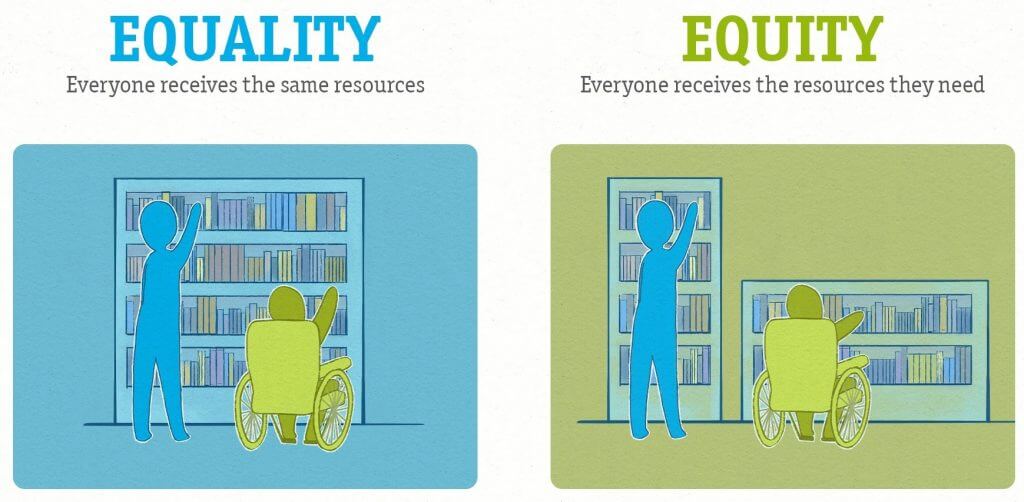For January and February, Random Acts is focusing on the #GetKind theme of Diversity. When we speak about diversity, we tend to speak of all the beautiful ways we are all different. What we tend to overlook is the systemic nature of inequality that comes from the inequitable treatment of those of us who do not fit in with a homogenous status quo.
The difference between equity and equality
 We tend to think of equality as the “end goal” — that if everyone is given equal resources and treatment, then the outcome will be equal as well. However, that is not the case. If everyone is given the same resources despite their individual needs, the inequality can heighten. That is where equity comes into play. The World Health Organization defines equity as “‘the absence of avoidable or remediable differences among groups of people, whether those groups are defined socially, economically, demographically, or geographically.’” Equity is necessary for true equality, as it “recognizes that each person has different circumstances and allocates the exact resources and opportunities needed to reach an equal outcome.”
We tend to think of equality as the “end goal” — that if everyone is given equal resources and treatment, then the outcome will be equal as well. However, that is not the case. If everyone is given the same resources despite their individual needs, the inequality can heighten. That is where equity comes into play. The World Health Organization defines equity as “‘the absence of avoidable or remediable differences among groups of people, whether those groups are defined socially, economically, demographically, or geographically.’” Equity is necessary for true equality, as it “recognizes that each person has different circumstances and allocates the exact resources and opportunities needed to reach an equal outcome.”
Why equality is not enough — or not possible without equity
Differences do exist, and that is why equitable treatment is important. We see this playing out every day in our societies. For example, many schools are currently shifted to online learning due to COVID-19. An equal approach would say that each student has the same expectation of the number of hours they are expected to be logged in to the online platform, and each is given the exact same work. However, this does not take into account the inequity between each student. Some households may have one computer for three or more children, meaning that they are unable to log in for the expected hours. Or, a more rural household may have enough school-provided computers, but may not have access to higher bandwidth internet to enable multiple logins. Equity could mean solutions such as giving more computers to households with more students, providing hotspots for households without internet access, or enabling work to be completed asynchronously.
We also see this play out in the workforce. Fields such as engineering are heavily male, which means that equity may require offering more support to female and nonbinary people interested in engineering. For another example, a Deaf employee may require an interpreter to attend meetings in order to access the same level of information and communication with their colleagues.
Notice that none of the above examples require taking from the group with fewer needs. Equity instead just means meeting needs in order to (hopefully) access equal outcome or opportunities.
How can we help?
The first step of moving toward equity is learning to recognize discrepancies. We cannot work to correct inequalities if we do not know they are there. Then, we can begin to correct those discrepancies through outreach and acts of kindness.
True kindness requires equity. If you know of any organizations or movements within your community that are focusing on equity, reach out to your regional representative to find ways to support their goals.

